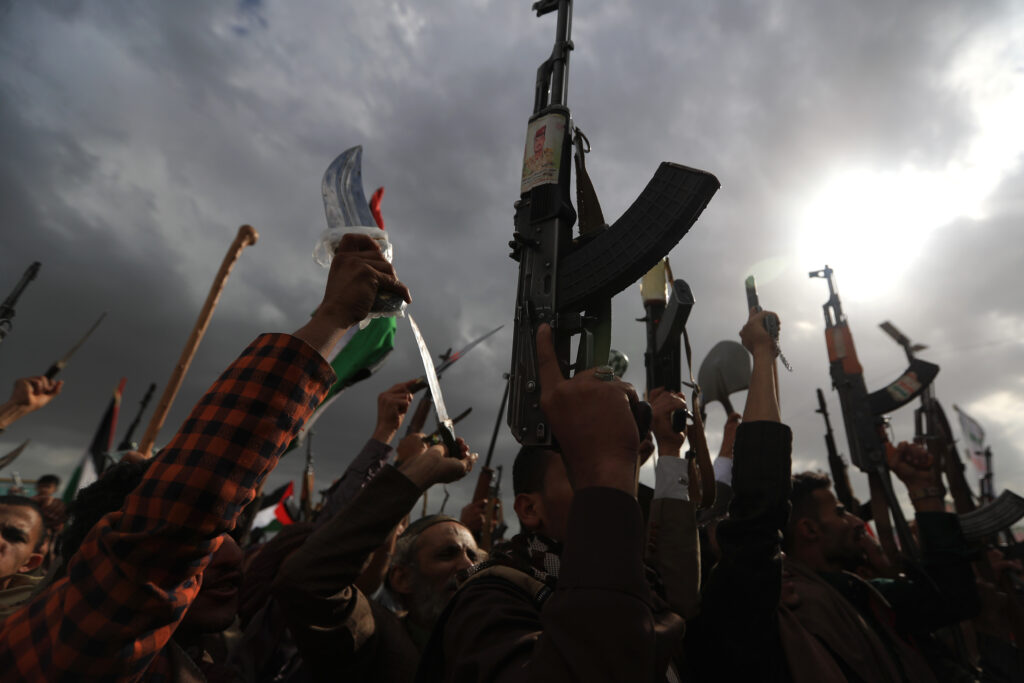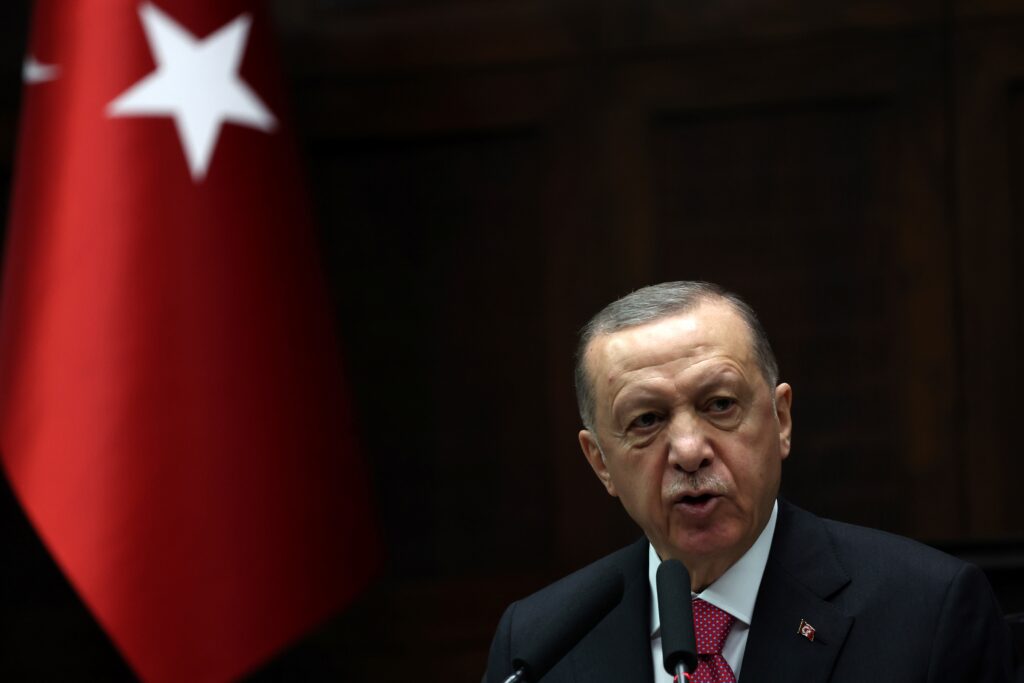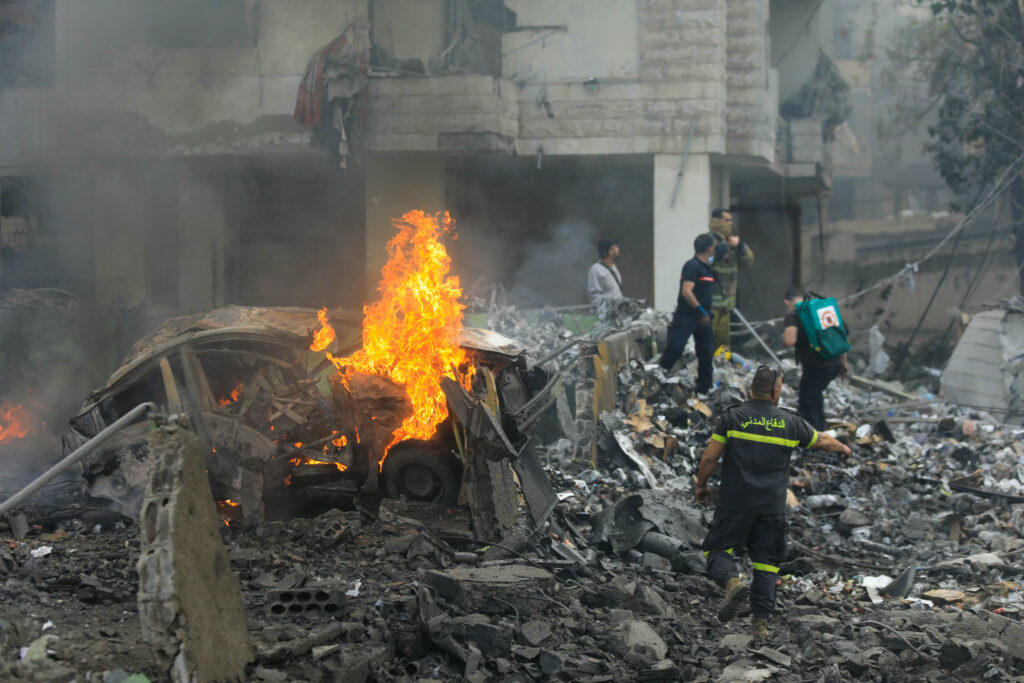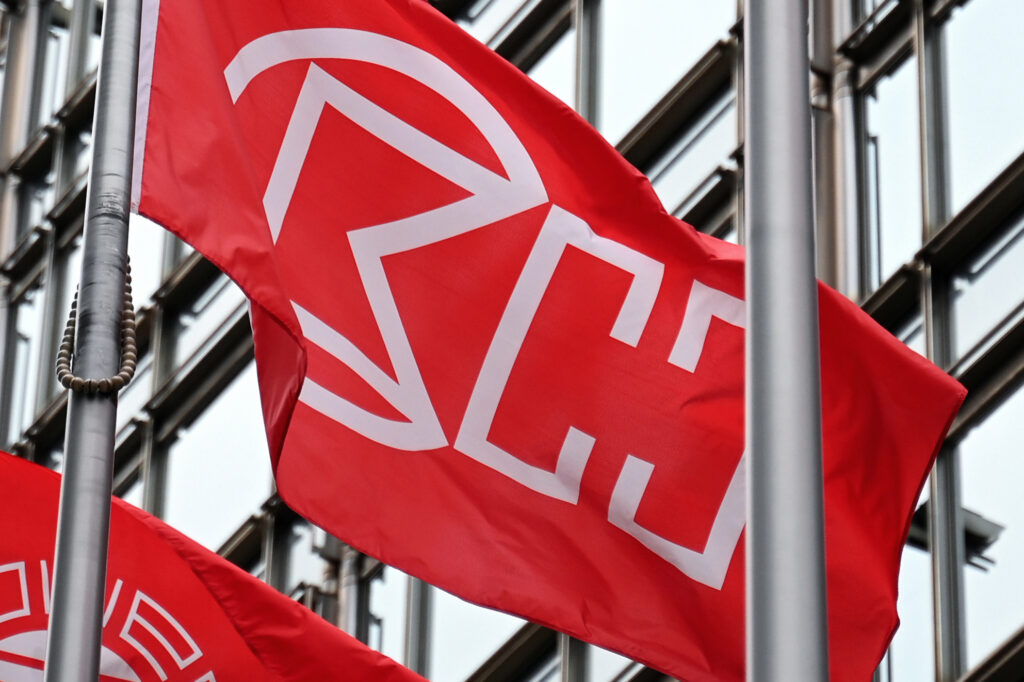AFP Asia Business
Iran, allies hold annual pro-Palestinian rallies
Large crowds took to the streets in the capitals of Iran, Iraq and Yemen on Friday for the annual show of support for Palestinians and denunciation of Israel.Quds (Jerusalem) Day commemorations were launched in 1979 by Ayatollah Ruhollah Khomeini, the founder of the Islamic republic, which has made support for the Palestinian cause a cornerstone of its foreign policy.The marches, which call for Jerusalem to be returned to the Palestinians, are traditionally held on the last Friday of the Muslim holy month of Ramadan.Crowds gathered in the streets of Tehran after supreme leader Ayatollah Ali Khamenei urged the Iranian people to protest against “the enemies’ tricks”.Demonstrators waved Iranian and Palestinian flags, as well as those of the Lebanese militant group Hezbollah.Many held placards reading “Death to America” and “Death to Israel”, and chanted anti-US and anti-Israel slogans, an AFP journalist reported.”I feel in the near future Gaza will be victorious and Israel, as history dictates, will face collapse and the flag of Islam’s might will be hoisted in Gaza,” Ahmad Reza Pourdastan, former commander of the army’s ground forces, told AFP.Keffiyeh-wearing 22-year-old student Fatemeh Mohebbi said she attended the event to “condemn the crimes that are happening”.Similar rallies were held across the country, state TV images showed.”Your march on Quds Day will nullify all the enemies’ tricks and false words,” Khamenei said in a video message on Thursday. – ‘Resistance will continue’ -The authorities had called on Iranians to come out in force for the demonstrations against arch foe Israel.Palestinian militant group Hamas — part of Iran’s so-called Axis of Resistance against Israel and the United States — said: “Jerusalem will remain at the heart of our battle against the occupation.”The enemy will not succeed in breaking the will of our people, who are making sacrifices for their Jerusalem and Al-Aqsa,” added the group, which has been at war with Israel in the Gaza Strip since October 2023.Thousands also gathered in the Yemeni capital Sanaa, held by the Iran-backed Huthi rebels, in demonstrations described by the rebels’ TV channel as “the largest in the Arab and Islamic world”.Demonstrations were also held in several other cities, coming shortly after dawn air strikes by the United States hit six Yemeni provinces, including Sanaa, according to Huthi-affiliated media.In the Iraqi capital, several hundred supporters of pro-Iran armed groups marched, waving flags in the colours of their factions, as well as Palestinian and Lebanese flags.”The Iraqi Islamic Resistance tells Palestine and its people that its right to land and its right to resistance is a natural right,” a leader of one of the armed groups, Qadhim al-Fartoussi, told the crowd.In Lebanon, Hezbollah leader Naim Qassem was due to give a speech that was called off after the cancellation of a demonstration scheduled to be held metres (yards) from a site struck by Israel on Friday. Demonstrators had gathered on Thursday at the Burj al-Barajneh camp for Palestinian refugees south of Beirut, holding Palestinian and Hezbollah flags, as well as pictures of Qassem’s predecessor Hassan Nasrallah, who was killed in an Israeli air strike last September.burs-jsa/kir
India signs $7.3 bn deal for 156 homemade helicopters
India on Friday announced a $7.3 billion deal to purchase 156 locally made light combat Prachand helicopters for its air force and the army — part of its ongoing push to be self-reliant on defence.The country’s first locally designed and developed combat helicopter will be produced at the country’s largest helicopter factory, opened by Prime …
India signs $7.3 bn deal for 156 homemade helicopters Read More »
Erdogan turns sights on opposition CHP with his main rival in jail
With the jailing of Istanbul’s mayor on corruption charges, Turkey’s Recep Tayyip Erdogan has got rid of his most powerful opponent. Now his sights are set on the main opposition CHP, analysts say.”When the big fishes are exposed, they won’t dare to look their own families in the eye, let alone the nation,” the president warned this week, hinting at a fresh legal action targeting the Republican People’s Party (CHP). Last week, Istanbul’s popular mayor Ekrem Imamoglu was arrested along with several top aides as well as two other district mayors as part of a fraud and “terror” probe, the move sparking a massive wave of protests across the country. All three mayors belong to the CHP, which on Sunday elected Imamoglu as its candidate for the 2028 presidential race. A fourth CHP mayor was also quizzed this week over fraud allegations. Press reports suggest the authorities are now trying to block a CHP congress on April 6 in order to decapitate its leadership a year after the party won a landslide victory in Turkey’s local elections.”The scale of arrests and charges indicates an attempt to systematically weaken the CHP in Istanbul,” Seren Selvin Korkmaz, co-director of the IstanPol think tank, wrote on X. – ‘Domesticating’ the opposition – For Yunus Sozen, a political scientist at Le Moyne College in New York, getting rid of Imamoglu was the first step in a broader scheme. “It looks like the initial plan was to jail Imamoglu, appoint a government trustee to Istanbul municipality, and then appoint another trustee to the CHP, thereby rendering competitive elections meaningless,” he told AFP. “However, at least for the time being, they have not proceeded with the second and third legs of the plan due to the massive protests,” he said.For that, they would “need to rely on coercion against the majority of society,” he said. Sebnem Gumuscu, a political scientist at Middlebury College in Vermont, said the upheaval since March 19 had strengthened the CHP — for now — making it “highly unlikely” its leadership would be unseated. But Erdogan was clearly trying to ensure the CHP was “domesticated” and unable to “fundamentally challenge his regime”, she told AFP. The CHP, which controls Istanbul, the capital Ankara and the western coastal city of Izmir — Turkey’s three largest cities — made a breakthrough last year, winning 35 of 81 provincial capitals. That was 11 more than Erdogan’s Islamic-rooted AKP which has been in power since 2002. It was a slap in the face for Erdogan, who lost Istanbul to CHP in 2019, and who is desperate to retake Turkey’s economic powerhouse of 16 million people, where he himself was mayor in the 1990s. In conceding defeat last year, he admitted it was a “turning point” for his party, which since then has tried to weaken the opposition. As he himself once said: “Whoever wins Istanbul, wins Turkey.”- ‘Crushing Turkey’s democracy’ -In backing moves to reopen dialogue with the banned Kurdish militant PKK in October, Erdogan was hoping to create divisions between CHP and the pro-Kurdish opposition DEM party, observers said.Last year, the two parties observed a power-sharing agreement as they did in 2019, ensuring Imamoglu’s resounding re-election, despite AKP’s considerable firepower. To protect itself from further attack, CHP “must build alliances with other political parties, civil society organisations and unions,” the Cumhuriyet opposition daily said on Friday. Although Erdogan has also sought to fan the flames of division within CHP itself, the party has for now closed ranks, united in the face of Imamoglu’s arrest and other attacks, and bolstered by the mass street protests. But that could easily change. “If the protests lose steam, the CHP risks reverting to fragmentation and may not sustain the large-scale mobilisation needed to challenge the ruling bloc,” said Korkmaz. But if Erdogan was successful in his efforts to strangle the CHP, it would be a drastic blow for Turkey’s fragile democracy, Sozen said.”Crushing the CHP means crushing whatever is left of democracy in Turkey,” he said. “More precisely, it means transforming Turkey’s elected authoritarian regime into a fully authoritarian one.”
Israel hits Beirut after rockets fired from south Lebanon
Israel made good on its threat Friday to strike Beirut after rockets were fired towards its territory, rattling an already fragile truce in Lebanon that had largely ended more than a year of hostilities with Hezbollah.Lebanese Prime Minister Nawaf Salam called the Beirut strike “a dangerous escalation” and French President Emmanuel Macron said it violated the truce.It was the second time rockets had been launched at Israel from Lebanon since the November ceasefire — the first was last Saturday — and the second time Iran-backed Hezbollah denied involvement.After the rocket attack, Israeli Defence Minister Israel Katz said: “If there is no quiet in Kiryat Shmona and the Galilee communities, there will be no quiet in Beirut either.”Israel has continued to carry out often-deadly air raids in south and east Lebanon since the ceasefire, striking what it says are Hezbollah military targets that violated the agreement.But Friday’s was the first in the capital’s southern suburbs since the ceasefire. It came after the military urged residents close to a building there to leave, warning they were “near Hezbollah facilities” and “must immediately evacuate”.It said the attack targeted a “site used to store UAVs by Hezbollah’s Aerial Unit (127) in the area of Dahieh, a key Hezbollah terrorist stronghold” in southern Beirut, which Israel bombed heavily during its war with the group last year.On a visit to Paris, Lebanese President Joseph Aoun, at a press conference with Macron, said an investigation will need to be conducted but all indications are “Hezbollah is not responsible” for the latest rocket fire.An AFP photographer at the scene said the Israeli strike completely destroyed the targeted building. Black smoke rose into the sky and fire burned among the rubble.Israel’s warning sparked panic in the densely populated area, AFP correspondents said. Heavy traffic clogged roads as many residents tried to flee.”We’re very afraid the war will return,” said Mohammed, 55, a taxi driver rushing to pick up his daughter from school and leave the area.Israel’s military said early Friday two “projectiles” were fired towards Israel, with one intercepted and the other falling inside Lebanon.It later announced it was “striking Hezbollah terror targets in southern Lebanon”.- ‘Act quickly’ -Hezbollah said it “confirms the party’s respect for the ceasefire agreement and denies any involvement in the rockets launched today from the south of Lebanon”.After the strike, Hezbollah said it had cancelled an event planned for Friday in Beirut’s southern suburbs.Under the terms of the ceasefire, Israel was due to complete its withdrawal from Lebanon by February 18 after missing a January deadline, but it has kept troops at five locations it deems “strategic”.The agreement also required Hezbollah to pull its forces north of the Litani River, about 30 kilometres (20 miles) from the Israeli border, and dismantle any remaining military infrastructure in the south.The Lebanese army deployed as the Israeli army has pulled out.Katz said Lebanon’s “government bears direct responsibility for any fire toward the Galilee” and if it does not enforce the ceasefire, “we will enforce it”.Salam urged his army chief “to act quickly to… uncover those behind the irresponsible rocket fire that threatens Lebanon’s stability” and arrest them.He also denounced “Israeli attacks that target civilians and safe residential areas”.Lebanon’s army later said it had identified the site of the rocket launch, just north of the Litani River, and was trying to identify the perpetrators.Analysts have said the weakening of Hezbollah during its war with Israel enabled Lebanon’s long-deadlocked parliament to in January name Aoun as president.- Three killed -At the press conference in Paris, Macron said such attacks by Israel “play into the hands of Hezbollah”.France is on the committee tasked with overseeing the truce.Lebanon’s official National News Agency had reported Israeli attacks in several parts of the south on Friday. It said a strike on Kfar Tebnit southeast of Nabatiyeh killed three people and wounded 18, including three children.It also reported shelling in Naqura, where the United Nations peacekeeping mission is based.UN special envoy for Lebanon Jeanine Hennis-Plasschaert called the cross-border exchange of fire “deeply concerning” and urged restraint by all sides.”A return to wider conflict in Lebanon would be devastating for civilians on both sides of the Blue Line and must be avoided at all costs,” she said.Hezbollah began firing rockets at Israel on October 8, 2023 in support of its ally Hamas following the Palestinian group’s unprecedented attack on southern Israel that sparked the war in Gaza.The cross-border hostilities ultimately escalated into all-out war.Israel on March 18 resumed intensive military operations in Gaza, shattering weeks of relative calm there brought on by a January ceasefire with Hamas.
Chinese regulator to vet Panama ports deal: Hong Kong media
China’s market regulator said it will review Hong Kong conglomerate CK Hutchison’s sale of Panama Canal ports to a US-led consortium, a Beijing-backed newspaper in Hong Kong reported on Friday.The business empire built by Hong Kong billionaire Li Ka-shing offloaded its global ports business outside China — including operations in the vital Central American canal …
Chinese regulator to vet Panama ports deal: Hong Kong media Read More »





